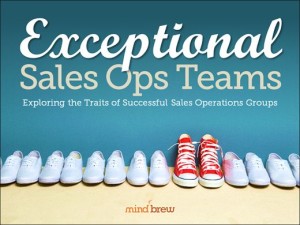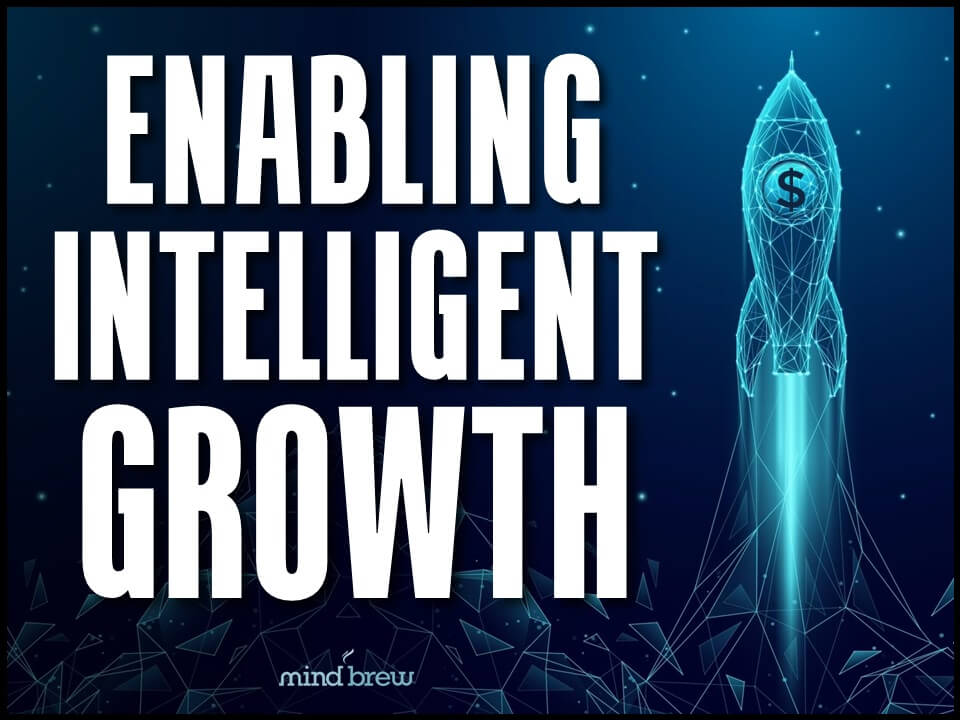Over the years, we’ve had the privilege to work and interact with a lot of different B2B sales operations teams. As a result of that experience, we’ve been able to develop a simple test that can tell you whether your team is doing the right things or not. The test only takes 10–15 minutes, but it’s extremely accurate at pinpointing how mature your sales ops team is.
But before we can give you the test, we need to explain a little something about the sales ops maturity cycle.
In the same way that most infants go through a predictable set of phases and stages as they become toddlers, then children, then teenagers, and eventually adults, “baby” sales ops teams also follow a predictable pattern.
Most sales ops teams are born out of a desire to make the sales team more efficient. The thinking is that if only the sales team didn’t have so much paperwork and drudgery on their plates, they would have a whole lot more time to focus on selling. So management creates a sales ops team to handle all those non-sales activities that eat up a lot of the sales reps’ time.
This focus on efficiency usually does help the sales team sell more, but the effect generally isn’t as big as management was hoping to see. Over time, the sales ops team comes to realize that they could do other things that would be more helpful. Instead of just focusing on efficiency, they begin to concentrate on effectiveness. They don’t just help the sales team get faster, they help them get better.
This difference between efficiency and effectiveness is really at the heart of our sales ops test. Efficiency is all about giving our sales team more time to sell, while effectiveness is about helping our sales team win more sales. And in the long run, an effectiveness focus has a much bigger impact on revenue and profits than efficiency.
We’ve found that we can judge where a sales ops team is on the maturity lifecycle by calculating the percentage of their activities that are focused on efficiency and the percentage that are focused on effectiveness. Of course, you are never going to get rid of all the “efficiency” tasks. Sales ops may always have a certain amount of data entry to do. But over time, you should see that those efficiency tasks are a smaller and smaller piece of your job while effectiveness tasks get a lot more time and energy.
To give yourself the test, start by listing all the tasks you expect to do today. (Or if you don’t think today is necessarily representative of what you usually do, you can list all your tasks for the week.)
Then go back and categorize your tasks based on whether they are focused on efficiency or effectiveness. You can sort them into different columns on a spreadsheet, or if you’re a pen-and-paper kind of person, you can use different colored highlighters for the two categories.
With either method, it should be pretty obvious whether you have more in the efficiency category or more in the effectiveness category. If you’re doing more efficiency tasks, it’s a sign that you are still pretty early in the maturity cycle. It’s time to start looking for some things you could be doing that would have a bigger impact on your company’s bottom line.
If your two categories are pretty even, it’s a sign that you’ve started to mature, but you still have a long way to go.
And if you have a much longer effectiveness list than an efficiency list, congratulations! You’ve reached “adulthood.” But just like in real life, that doesn’t mean that the hard work is over. It just means that you understand how much work there is to do and how much you could accomplish. For a good sales ops team, the process of finding more ways to improve effectiveness never ends.
Once you’ve done the test for yourself, you can also go back and re-take the test from the perspective of your entire team. You can also list tasks for an entire month or an entire quarter. That can give you the big picture view of how the team is doing overall.
For some of you, this dichotomy between efficiency and effectiveness is a brand-new concept, and you might have some difficulty categorizing your list. If you find yourself in that position, we recommend revisiting the webinar on Exceptional Sales Ops Teams. At the beginning of part two, you’ll see a helpful chart that breaks out some common sales ops metrics, technology, planning activities, and training into the two different categories.
Really, this is a great webinar for any sales ops team. No matter where you are in the maturity cycle or whether you passed or failed our little test, the advice from this resource can help you move closer to your goals.












